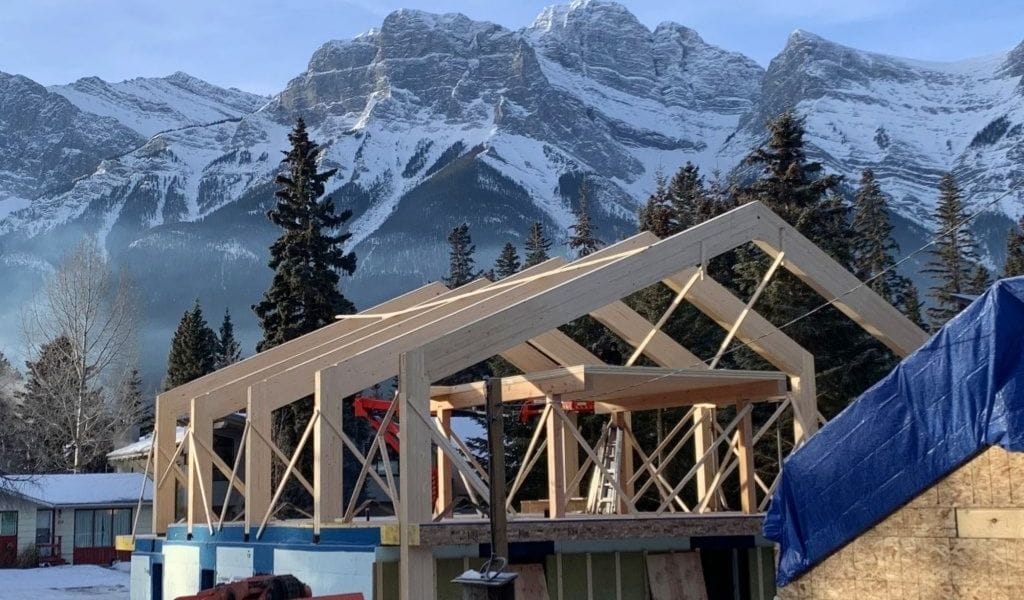- Bow Valley Insider
- Posts
- Declare Your Home or Pay the Price: Canmore Launches Livability Tax
Declare Your Home or Pay the Price: Canmore Launches Livability Tax
New rules could add thousands to your tax bill if your home sits empty

Funds from the Livability Tax are expected to support town-owned non-market housing developments for local workers.
CANMORE - If you own a home in Canmore and don’t declare it as your primary residence by December 31, 2025, you may face a notable tax bill in 2026. The town’s newly launched Livability Tax Program requires property owners to confirm whether their home was occupied by a full-time resident during the calendar year. If not, the property will automatically be shifted into a higher tax rate category.
What’s Happening?
Homeowners who declare their property as a primary residence, or rent it to someone who does, will qualify for the lower residential tax rate. Those who don’t will be subject to an additional tax of approximately 0.4 percent of the assessed value. For a median-assessed home in Canmore, around $1.04 million, that works out to roughly $4,000 in extra municipal tax.
To qualify as a primary residence, the property must be occupied for at least 183 cumulative days in the year, including one continuous stretch of at least 60 days. Owners must declare online by December 31 each year. Failure to do so means automatic placement in the higher tax bracket.
Why Now?
The program comes as Canmore grapples with an acute housing crisis. Roughly 25 percent of homes in town are not occupied by full-time residents, and the vacancy rate sits at only 0.9 percent. The concern is that when large numbers of homes are used part-time or sit empty, the community loses housing for local workers, families, and retirees.
The Livability Tax is designed to encourage long-term occupancy and generate revenue to fund new affordable housing projects. In Canmore, this often means what the town calls non-market housing, which refers to homes priced below market rates and reserved for full-time residents who work in the community. These include developments managed by Canmore Community Housing, a town-owned non-profit that offers ownership or rental units to locals earning moderate incomes who would otherwise be priced out of the private market.
The Numbers
Town council initially estimated the program would generate about $12 million annually for 2025 and 2026. After the first round of declarations, that figure was revised to about $10.3 million. The 0.4 percent tax rate is seen as modest compared to other cities. In Vancouver and Toronto, vacant home taxes have reached as high as 3 percent of a property’s assessed value.
The Debate
While the program is presented as a housing-affordability tool, not everyone agrees it will solve the problem. Local officials argue it is a necessary intervention to preserve community vitality. Mayor Sean Krausert has said Canmore’s housing crunch is an existential threat to the town’s sustainability.
Critics, including second-home owners and some real estate groups, argue the tax unfairly penalizes people who contribute to the local economy but don’t live there full time. Others say it will do little to address the deeper issue of limited housing supply and high construction costs.
The program has already faced legal scrutiny. A ruling from the Court of King’s Bench confirmed the bylaw was valid under provincial legislation, though tax collection was delayed until the 2026 tax year due to administrative concerns.
What Homeowners Need To Know
Property owners will receive a letter with a tax roll number and access code to complete their declaration online.
The declaration must be completed by December 31, 2025. Properties without a declaration will automatically be taxed at the higher non-primary rate.
Renting your property to a full-time resident who uses it as their primary home still qualifies you for the lower rate.
If you spend only part of the year in Canmore, you’ll likely fall into the higher-tax category unless you meet the occupancy rules.
Homes classified as “tourist homes” do not qualify for the lower tax rate (these are properties approved for short-term rentals, such as Airbnb or VRBO, and treated as part of the tourism market rather than residential housing).
Will It Work?
The Livability Tax is part of a broader housing strategy that includes limiting short-term rentals, encouraging long-term occupancy, and creating a steady source of funding for affordable housing. The town hopes to add around 2,000 new non-market homes by 2031. With a new four-year council mandate following the October 20 election, led by a mayor who campaigned on this approach, time will tell whether the Livability Tax delivers on its promise to make Canmore more livable for full-time residents.
Bottom Line
If you own property in Canmore, this year matters. December 31, 2025, is the deadline. Declare your property status or be prepared for a higher tax bill that could total thousands of dollars. The message from the town is clear: the cost of not acting is going up.
Reply